
Types Of Sliding Doors
- Designs
- Types of mechanisms
- Types of locks
- Advantages and disadvantages
- Some recommendations for the care of sliding doors - the pencil case

Interior sliding doors are in great demand. Now, with "pencil” profiles. A special box in which the sliding door is hidden.

Designs
Before you decide on the mechanism for installing the sliding door, you should also decide on the type of structure. Various types of sliding doors are offered, including barn door options, and you can choose the most appropriate one based on the room's size and existing door frame.
At Milcasa, swinging doors are the most popular option. They have a long history and an extremely simple principle of operation. The door is mounted on hinges and opens in a certain direction. These models have been in use for centuries, but their main drawback is that the open position takes up quite a lot of space. In contrast, pocket sliding doors offer a space-saving alternative, making them a great choice for new doors in modern interiors.

For this reason, the inner room sliding systems of the “pencil” type became very popular. Opening and closing types of sliding doors do not take up much space and do not affect nearby surroundings (such as banging into walls). Based on their design, the most well-known types of sliding doors are tingle and double systems, radius, and folding.
A single door is the simplest model. Such systems have one leaf, which, moving along the guides on its own track, is usually retracted to the right side (the direction of the door movement can be chosen individually). In some designs, the door can slide into a hidden cavity within the wall, offering a sleek and space-saving solution. This is especially common in types of sliding glass doors, which enhance modern interiors with a minimalist aesthetic.

The double-wing profiles have two flaps, which open to both sides according to the elevator principle. In the open position, the flaps of these larger doors are located along the wall systems or can go into specially built grooves, which can be added during construction. In this case, it will be a closed-type system, which usually must be built in. The prices vary depending on the design complexity and installation requirements.

Doors of radius type are perhaps the most creative and innovative for the design of the apartment. The presence of such a profile will give the room a rather refined and non-standard look. Their main feature is, as a rule, a semicircular shape. In this design, there are no straight lines, and all angles are smoothed. It is recommended that a door case of such a model be installed in rooms with a contemporary design that perfectly complements it. The radius profile is also suitable for smaller spaces because the lack of right angles will make the room more spacious visually. Additionally, models with double glazing can enhance both aesthetics and insulation, making them a stylish and functional choice.

And finally, the folding type. Many homeowners choose these doors because they open on a principle similar to an "accordion." Sometimes, it is also called the "tram" mechanism, as the opening system resembles a design in a tram. This profile consists of panels of the same size (10-15 cm); otherwise, opening the door will be problematic. In turn, systems of folding type can be presented in the form of a “book.” That is, the design consists of only two panels, and when opened, part of the door folds in half. To save space, folding-type structures are a very suitable option.

“In the production of doors-cases, various materials are used. Pencil systems can also be made of glass.”
Types of mechanisms
After the structure's operating principle is chosen, its sliding mechanism, especially for doors with multiple panels, must be given extreme attention. The perfect types of sliding doors and sliding door hardware mechanisms can be divided into the following categories.
- The suspension mechanism: is the simplest and, therefore, quite reliable. It can withstand a large load. Polymer rollers move on the bearings, and patio doors and other sliding models open easily, smoothly, and silently.

- Barn type. This mechanism is usually used when the interior of a room is designed in a loft style (when more vintage elements are incorporated into a modern room) or retro. The design has an old or rustic look, and the mechanisms are left uncovered. This design operates based on a system of two large metal rollers.

-
The telescopic mechanism: This type of sliding door system is used on systems with two or more leaves. It is quite complex and is used much less frequently than the usually suspended mechanism. The doors are suspended on a parallel system of guides and connected by a special system of synchronizers. When you open one door leaf, the second opens automatically. The same principle of operation implies a synchronous mechanism.

Types of the locking mechanism
We should also consider the locking mechanisms for various types of sliding doors. We must pay attention to the material and to some types of locking mechanisms, especially for sliding patio doors, which require secure and durable options.
They can be represented by the following types.
- Harpoon mechanism. Mainly installed on single-leaf and more rarely on double-leaf structures, the flaps of which move to the wall. The mechanism itself is fixed on the door, and the reciprocal plate is attached to the wall. When the door closes, the tongue of the mechanism enters the opening of the slat, ensuring the slabs do not move.

- Push-button mechanism. Such a model is used, as a rule, only on double doors and pocket doors. The option of a push-button mechanism is well-suited for mirrored or glass doors. In this mechanism, there is a special rod that rests on the second door and does not allow it to open. The types of sliding doors equipped with this mechanism offer enhanced security and stability.

- Magnetic mechanism. This mechanism's main advantage is its small size. In this case, the magnet ensures the door's fixation. However, when choosing a locking mechanism, it is worth remembering that a magnet tends to demagnetize quickly, especially if the weight of the structure is not taken into account and the agent has too much load.

Ways to open the case door are listed below.
- Mechanical. The most common and easiest option. The door opens in this case with the application of force to it.
- Auto. It requires an electrical connection or can sometimes run on battery power. The principle of operation of this method is to respond to an object approaching the door, and automatically turn on the opening mechanism. This type of opening design is often found in large supermarkets and offices.
It is necessary to allocate a number of major components that are included in the foam system.
- Door leaf;
- Penal sliding system;
- Mechanical latches and motion stops;
- Fittings (includes a set of wheels and door handles);
- Cassette.

Advantages and disadvantages
Reviews of buyers who purchased the door-case, as a rule, the most positive.
The following advantages of a sliding-type system were noted.
- Significant savings in indoor space;
- The door-threshold not taking up too much space;
- The door does not close by itself and will not slam with drafts;
- No noise when opening.
Some cons of the sliding construction were highlighted.
- More difficult installation process;
- More expensive installation;
- Low noise insulation (if you choose the system of the correct thickness, then this disadvantage can be avoided; you can also choose a special gasket from felt);
- Retractable rollers may deteriorate over time, so you should pay special attention to the sliding mechanism when choosing or have a set of spare rollers.
“Obviously, the advantages of sliding case doors more than compensate for their disadvantages.”

Some recommendations for the care of the door-pencil case
In order for these types of sliding doors to last for a long time and to cause no inconvenience in their operation, it is necessary to take into account a number of rules for caring for the system.
- Avoid high humidity in the room, as the door material can deform from it;
- Avoid debris in the guides and sliding mechanism;
- Periodically clean the sliding structure with a vacuum cleaner;
- Watch out for wear on the sliding mechanism.

If you follow the installation recommendations, the foam system will work flawlessly and will last a long time.
The installation of the door-case can be formulated as follows.
- To install the sliding structure the wall must be flat. This will ensure the correct operation of the sliding door and will avoid distortions.
- Each sliding system is accompanied by a scheme for its installation, which needs to be followed precisely during self-assembly.
- Accurate measurements are especially important in the first stage of future design. When calculating the length of the guide rail, remember that it should be equal to twice the width of the doorway for this type of sliding door.

- It is necessary to accurately calculate the width of the case. If the cassette is narrow, it will constantly interfere with the smooth opening of the door.
- The space between the door and the floor should not exceed 5 mm, otherwise the sound insulation will decrease. Incorrect measurements are the most common mistake when installing sliding systems.
- The lifting capacity of the sliding mechanism must be considered. Since the door leaves have different weights, the mechanism must be selected individually for each.

- Door-case should be installed on the already finished floor and made to the wall.
- If the structure is installed to the supporting wall, then a frame should be fastened to it, which is sheathed with plasterboard. When finished, putty is to be applied on top, where it will be painted or wallpapered.
- After installation of the door-case, the following materials are usually used for its finishing: plasterboard, plywood, plaster.
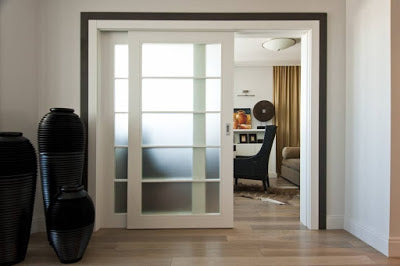
The type of sliding door model "case" is an excellent choice for small apartment owners because it allows you to save a large amount of storage space. The sliding mechanism is an important aspect when choosing a doorcase. Penal designs look creative and give the room a certain modern style. This model is suitable for both indoor and outdoor spaces, providing a seamless and space-saving solution. The main requirement is to correctly and precisely install the sliding system and carefully monitor its operations.
Transform Your Home with Premium Sliding Doors! Find the perfect bypass, stacker, or glass sliding door for any space.
FAQs
What are the advantages of patio sliding doors for homes?
Types of sliding doors, such as patio sliding doors, provide a seamless connection between indoor and outdoor spaces, offering excellent natural light and ventilation. They are perfect for maximizing space since they slide rather than swing, making them an ideal choice for compact areas. Many homeowners prefer sliding glass doors for their patios due to their sleek design, ease of operation, and energy-efficient options.
What is the standard size for a sliding door?
A standard sliding door typically measures 80 inches high and has widths ranging from 60 to 72 inches. However, custom options are available for those needing wider or taller doors. Sliding barn doors and stacker sliding doors can be tailored to fit various openings, providing flexibility in design and function.
How do sliding glass doors enhance home aesthetics?
These types of sliding glass doors add a modern, elegant touch to any home. They incorporate large glass panels that create an open and airy feel, allowing more natural light to enter and making interior spaces feel larger and more inviting. Whether used as external sliding doors or interior doors, they enhance visual appeal while maintaining practicality.
Are sliding barn doors a good option for room dividers?
Yes, sliding barn doors are an excellent choice for room dividers. They offer a stylish and functional way to separate spaces while maintaining an open-concept feel. Unlike traditional doors, they slide smoothly along a track, making them ideal for small or multifunctional areas. Closet doors and bypass doors can also function as effective room dividers.
What are the benefits of sliding French doors compared to traditional French doors?
Types of sliding doors like Sliding French doors combine the elegance of traditional French doors with the space-saving benefits of sliding mechanisms. Unlike hinged French doors, which require clearance for opening, sliding versions glide along a track, making them ideal for areas with limited space. These doors also feature large glass panels, which enhance natural light while maintaining a classic aesthetic.
What is the difference between sliding bi-fold doors and stacker sliding doors?
Sliding bi-fold doors consist of multiple door panels that fold against each other, allowing for a wide opening. They are perfect for creating an indoor-outdoor flow. On the other hand, stacker sliding doors have multiple panels that slide behind one another, providing a more streamlined look while still offering a large opening. Both options maximize space and add a contemporary feel to any home.
How do bypass doors work, and where are they best used?
Bypass doors slide past each other on a track, making them a great choice for areas where swing doors would take up too much space. They are commonly used as closet doors, pantry doors, or room dividers. Their smooth operation and space-efficient design make them an ideal solution for both residential and commercial applications.
How do I choose sliding doors for my space?
When selecting types of sliding doors, consider factors such as space-saving design, aesthetic appeal, security features, and energy efficiency. Whether you need doors for residential or commercial properties, ensure they function perfectly and align with your interior design.
How do accordion doors compare to traditional sliding doors?
Accordion doors fold in sections, making them an excellent choice for saving floor space. They function perfectly in both residential and commercial properties, offering a flexible way to create private spaces while maintaining an open-plan living area when needed.

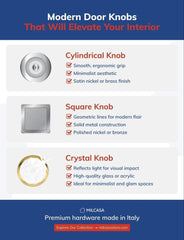
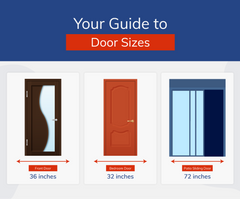
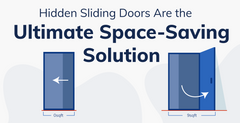
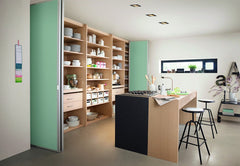
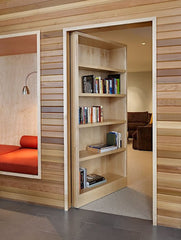
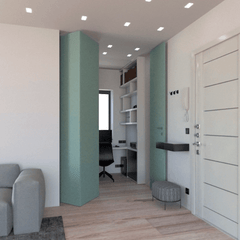
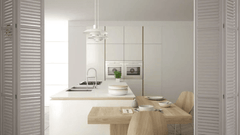
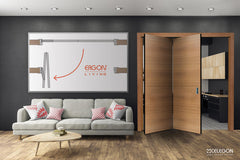
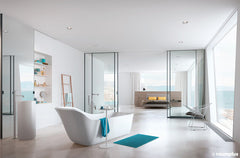
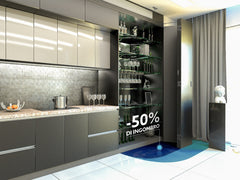
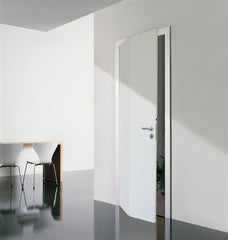
Hello. Thank you for such a well written and technical description of the many different door types. There is only one thing I’d like to know more about as for my own projects. The counterweight system and how to properly and proficiently employ one set of counterweight to assist a wood top hung roller sliding door. I designed something different. Something that’s quite frankly a brand new design that came to me in my sleep. It’s a system that’s center mounted to the door itself. I’ve designed a pivot point in the center of the door with a round counterweight a half inch wide by 9" in circumference and weighs 11 pounds. On the other wide off the door is a vertical slot and a lever that protrudes only an inch. When you pull the lever down it pivots the ‘rail’ the round counterweight sits upon and said weight rolls to the edge of my 38" door, applying the counterweight balance to a cable hooked to a pulley opposite of that edge and then mounted to the edge where the weight has rolled to, effectively putting force to draw the door to that side. When you push the lever all the way up the rail then pivots in the opposite direction which of course adds the counterweight to that side and effectively opens the door. I would love to share my invention with you as soon as I finish my prototype. Thank you very much for your time.